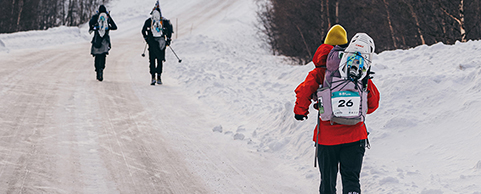Fuelling to Send: Food and body weight in rock climbing

Ashlee Hendy climbing Masada (29), Mount Arapiles
About 2 years ago I was at the base of a classic Arapiles crag on a sunny winter’s morning, where a small crowd of stoked climbers had started to gather to enjoy the pleasant weather and popular single pitch test-pieces. There was about 10 people milling about, but at said crag there is only a couple of routes, and they are all relatively ‘hard’. My husband was climbing elsewhere, so I was climbing with a friend. I probably would have been comfortable to accept a belay from anyone present, since I knew everyone well enough, and trusted them as good climbers and good people.
I had a go on the route I was projecting, but I was having a hard time. I had just finished another stressful week of work and had been feeling exhausted for a few weeks after a lingering virus. My effort was pretty flat and dismal, and I sagged on to the rope several times, calling “take” even through easier sections of climbing. Given how busy it was, I decided to lower off and let someone else make the most of the good conditions. “It’s just not happening for me today” I called down to my belayer. “I’ll come down and make room for someone who’s able to put up a better fight”. It seemed like the polite thing to do, and I had a feeling I would enjoy my day a lot more if I focused on socialising, belaying, and maybe trying something a bit easier.

Photo credit: Daniella Iljon
Once I reached the ground, one of the other climbers remarked with a jovial grin, “A bit too much for dinner last night Ash?” I paused, but before I even spoke his cheeky expression dropped. As thoughtless as the comment had been, he was easily able to read the disbelief and anger on my face, and I could tell he instantly regretted the words.
I replied calmly, “More likely not enough. After years of buying into that toxic mindset, I’ve finally discovered the importance of fuelling my body properly and the results have been amazing. Climbers really need to get over this obsession with trying to be light and just focus on being strong.”
A fairly awkward silence followed – not surprisingly, no one wanted to enter the conversation after my blunt response. I smiled to try and lighten the mood, then pulled my rope to make room for the next candidate. After a few lingering moments, the focus shifted, and everyone got on with what they were doing.
Although I was shocked and disappointed to have been on the receiving end of such a thoughtless comment, it had not done me any harm; I firmly believed what I said in response. It was reassurance to me that I was indeed free from the ‘light’ culture in climbing, and a bad day at the crag no longer triggered me to despise the soft flesh on my stomach, refuse my dinner, or count calories for a week. I knew that dietary restriction would hinder my efforts in sending this project, even if clueless onlookers thought otherwise. I glanced around and noticed there were no other women present, and thankfully I was probably the youngest person within earshot by a good half a decade. Hopefully no one had been negatively triggered by the original statement. Maybe those who were present had the sense to listen to my response, and perhaps challenge their own way of thinking.
I reflected on the incident and wondered how this individual had thought it was appropriate to make such a comment. It’s likely they weren’t really thinking much at all, since I know them well enough to be sure they had not meant harm or malice. It’s likely that they would not have said anything if I was a heavier build, but felt my slight frame made me immune to the negative diet culture in climbing. But anyone who has ever suffered from disordered eating or body image will know that it’s not possible to judge one’s relationship with food simply by looking at them from the outside. When a climber decides they should lose weight, it has little to do with their current size. The desire to be smaller, lighter and leaner becomes a vicious cycle that seems impossible to exit. Once the mindset creeps in, there is no such thing as light enough.
I was victim to this mindset for many years. As a result, I wasted years failing to reach my full potential as a climber. My body lacked the necessary nutrients to best adapt and respond to the hours spent training. I struggled to develop upper body power, and became injured more easily. I lacked energy while at the crag. And worst of all, I despised my own body and felt miserable when it wouldn’t perform to the arbitrary standard that I had set for it. Throughout the whole period of time where my relationship with my body and food was so negative, I would have looked completely normal to the average onlooker. My actual weight probably fluctuated no more than a few kilos, and I did not change the sizing of my wardrobe. My efforts to shed body fat percentage resulted in miniscule changes, that I examined and scrutinised with extreme detail. Eating less and less all the time, I lost tiny amounts of fat, but huge amounts of enjoyment, fulfilment and sanity.
The greatest performance increase came only when I completely gave up on the idea of being light, and started to focus on fuelling my body appropriately without shame or judgement. It took some time to re-adjust. My body had been in a state of deprivation for years and I had lost my ability to trust or even recognise self-regulated hunger. But eventually, letting go of my fears and simply eating the food that I desired, I got stronger and more powerful. I got a little heavier, and I wasn’t as lean as any of the athletes I looked up to on my Instagram feed. Some of my clothes started to feel a little tight, and if it bothered me, I donated them and bought a size up. But sure enough, I started to send my projects, enjoy my climbing more, and feel less injured and run down all the time. I followed no structured diet, and I didn’t count calories. I put some effort into ensuring I consumed protein with each meal and after training, but in general I tried to think less about food. In an effort to break habits of guilt and negativity, I tried to switch off all ideas about ‘good’ and ‘bad’ foods. It took some time, but eventually I got there. And it wasn’t until an onlooker challenged me with a thoughtless comment about the previous night's dinner that I knew I had truly won the battle.
In a sport with a dark history of eating disorders and body dysmorphia, I still see a narrative telling climbers they should be leaner and lighter, and clearly, so do my fellow companions at the crag. For every pro climber that bravely speaks out about disordered eating, there are 10 others posting pictures of their ripped abdominals on Instagram. We have a long way to go. For some, my story might seem like a repetition of the same message coming from of our sports most admirable ambassadors. But for those who need to hear it, repetition is key. I’m so glad that I have been able to move past it on a personal level, but it pains me to think of how many climbers are fighting silent battles, limiting not only their performance, but crucially, their health and enjoyment of the sport.
If the content of this article has been triggering for you, I would encourage you to chat with a trusted friend of family member, consider seeking advice from a psychologist, an accredited dietician, or contact the Butterfly Foundation. You might also want to have a look at an amazing doco called Light, which goes further into eating disorders in rock climbing. If you’re one of the lucky ones who has never felt the pressure or played with the idea of weight loss, you can still do your bit to help improve the culture in our sport. Avoid comments such as “I feel heavy today” and replace with terms such as ‘weak’ ‘tired’ or simply ‘bad’ (and yes, it is ok and normal to feel this way from time to time!). Avoid commenting on the size or shape of your own body, whether it be negative or positive. And especially avoid making such comments about another person’s body or food choices, even if you think it’s a compliment. Telling someone they look ‘ripped’ or congratulating them on trimming down only perpetuates the false importance we have around body weight and size. Model positive behaviour by eating regularly during and after crag days, and in response to your hunger, regardless of how you are performing on any given day. Together, I hope that we can continue to slowly shift the focus and ensure everyone has enough fuel to send their projects!

Masada (29), Mount Arapiles, Photos credit: Christopher Glastonbury
See our range of rock climbing gear, or have a look at previous Bogong Blogs by Ashlee.
Questions? Visit us, email us or call us (03 9600 0599).
More Articles



















